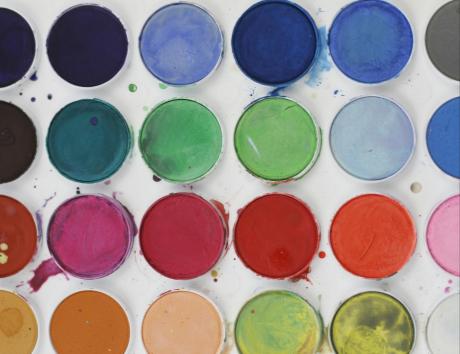Best CV Colours: A Complete Guide with Tips
Adding a splash of colour to your CV can catch the eye of the reader, showcase your personal style or highlight key information. The colours you choose, and the way you use them, can make a big difference to the overall impact of your CV and your chances of success. In this article, we’ll discuss why and how to add colour to your CV, providing examples of the best and worst types of colours to use for different job applications.

Should you add colour to your CV?
While it’s not essential to add colour to your CV, subtle colour accents can enhance your document in several ways. It can make your CV easier to read, while drawing attention to particular information on your document. It can also make your CV stand out from monochrome documents. There is evidence that the colour you choose for your CV can have an impact on the opinion the hiring manager will form about you.
Colour psychology is the study of how colours can impact our mood and influence our behaviour (1). Warm, cold, bright and dark colours can all help to convey an emotion, form an opinion or influence an action. The colours you select for your CV will impact the way the reader feels about your application. Colour psychology has long been used in marketing to help drive sentiment towards brands and products (2). Your CV is essentially a personal marketing document for your professional brand, so it’s worth contemplating adding colour to help you convey your desired messaging.
So, colour can have a transformative effect on your CV and the opinion employers form about you. It’s definitely worth thinking about adding colour to your CV. However, remember there may also be situations, and sentiments you wish to convey, which dictate that it’s best not to use colour. Read on to find out more about which colours to use, and which situations to use them in.
Best Colours for CVs
The best colour for your CV depends entirely on the role you’re applying for and the image you want to project to hiring managers. Certain colours are more effective for different industries or levels of seniority, so it’s important to choose your CV colours wisely and treat them with the same care and attention as the words in your document. Here are some of the most popular CV colours, and the situations where they can be most effective:
- Black: A monochrome CV can appear classic and professional. Black colour accents on your CV doesn’t just mean typing out your CV as a plain text document. Highlighting, colour bars and columns can add a sleek, traditional style to your CV to evoke a sense of professionalism and order.
- Navy blue: this colour helps to create a sense of trustworthiness and dependability. Navy blue can make people feel safe, evoking emotions that include relief and comfort.
- Grey: Greyscale CVs add a modern and sophisticated edge to the traditional monochrome style. Grey is the subtlest type of colour palette you can use for your CV, and gently draws the attention of the reader to the details you wish to highlight.
- White: white in its various shades helps to create a clean, simple and sophisticated document. You could stick to pure white or use cream, pearl and ivory shades to gently influence the reader.
- Dark green: the use of green in a CV can convey various meanings, but darker shades of green are popular as they evoke a sense of growth, harmony and innovation. In certain contexts, dark green can also support a sense of nature and heritage.
Expert tip:
Colours to Avoid on CVs
While the most suitable colour for your CV depends heavily on the role and your own personality, there are some colours that are almost always a bad idea. Just bear in mind there are no hard and fast rules, and even the colours below may be suitable in some situations. However, we wouldn’t recommend using the colours below in most scenarios:
- Bright red: while darker shades of red can create feelings of power and passion, brighter reds are usually too alarming to use on a CV. This colour can feel aggressive, and colour psychology indicates that people often associate bright red with danger and even anger. These are clearly sentiments that it’s best to avoid attaching to your job applications.
- Neon colours: bright and neon colours may catch the eye of the reader, but in many situations they’re likely to appear unprofessional. Neon colours can evoke a sense of youth and energy, but they might also create the impression of immaturity and a lack of seriousness, which can be damaging for many professional settings.
- Pastels: shades of pastel can be useful as subtle colour accents to accompany a relatively pared-back, simple CV design. However, use these with caution as they can make things difficult to read. Colour contrast is an important consideration, especially when it comes to text and background colours. If you decide to add pastel colours, always opt for the highest possible contrast between your text and background.
"It’s important to choose your CV colours wisely and treat them with the same care and attention as the words in your document."
Tailoring CV Colours to Different Industries
The most suitable colour for your CV depends heavily on the industry you’re applying to work in. Different industries gravitate towards different personality types and candidate profiles, and the colour you pick for your CV can help influence the opinion recruiters and hiring managers form about you. Here are some guidelines on which colours work best for different industry sectors. As mentioned previously, these aren’t hard and fast rules, but they can be useful as a guide to making decisions about the design of your CV:
- Business and finance: conservative, understated colours like black, navy blue or grey work well for this sector, where values such as trust, integrity and tradition tend to make an impact.
- Creative industries: creative sectors tend to offer more flexibility for CV colours. Dark green or more muted tones can work well for the industry, but you might also consider brighter colours, depending on the type of company.
- Tech sector: favourable colours for this sector include greyscale colours such as charcoal, as well as blues. The shade of grey or blue you choose will depend on the nature of the company. Younger, vibrant and innovative firms could favour brighter tones.
- Fashion and retail: purple can be a highly effective CV colour for fashion industry applications, as it evokes a sense of luxury.
- Manufacturing and engineering: green tones work very well for engineering and manufacturing applications, owing to its associations with nature and the environment, as well as wealth and tradition.
- Education: using brighter, more vibrant and energetic colours on an education CV can help convey a sense of positivity and happiness. Yellows can work well, but use them sparingly and with colour contrasts in mind.
- Health: greens and blues are classic colours to use for applications in the health and medical professions. These colours evoke feelings of nature and cleanliness, while both colours are thought to help relieve stress.
How to Implement Colours in Your CV
Follow these tips to make sure you use the most suitable colours in the most effective way possible for your CV:
- Be subtle and selective: when adding colour to your CV, subtlety is key. You’ll want the colours to gently convince the reader you’re right for the job, without being too overt and obvious about it. Too much, or too many colours can overwhelm your document, make it less pleasant to read and make you appear less professional. Choose CV templates that keep the colour accents as subtle and unobtrusive as possible, using a single colour palette or at most two complementary colours.
- Be aware of colour contrast: colour contrast is a vital element of the decisions you make about your CV design. Pick colours for your text and background that contrast strongly with each other, to make your document as readable as possible. Black text on a white background, or vice versa, offers the strongest possible colour contrast. The closer the colours of your text and background become in shade and hue, the harder your document will be to read. If in doubt, use a colour contrast checker and aim for a contrast of at least 4.5:1.
- Reserve colour for headings, borders and columns: it’s usually best to keep the body text of your CV black or, at most, a very dark shade of grey. Reserve colour accents for your headings, borders, columns and design accents throughout your document.
Key Takeaways for Adding Colours to Your CV
Adding colour to your CV can drastically improve the appearance of the document, and the impact it makes on employers. Think carefully about the type of colour that’s most suited to your personality and profession, and select CV examples that use colour sparingly for a subtle, professional look and feel. CVwizard’s CV maker can help you create a clean, attractive CV design with eye-catching colour accents. Sign up today to start designing your CV and access a wealth of CV tools, resources and articles.
Sources:
(1) verywellmind, Color Psychology: Does It Affect How You Feel?
(2) Helpscout, Color Psychology in Marketing and Branding is All About Context



